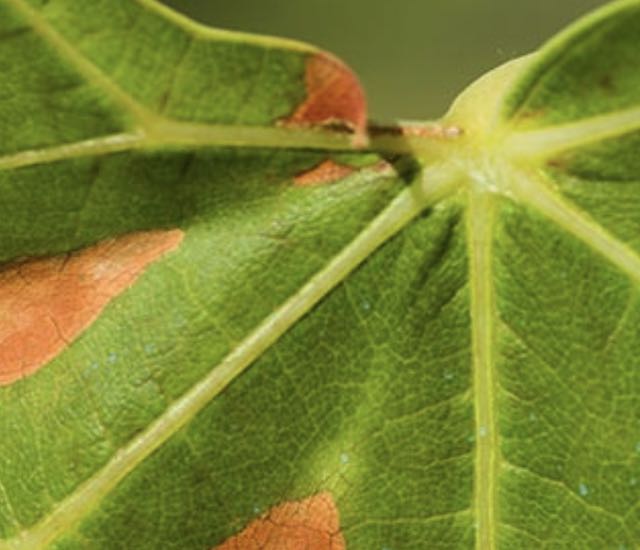7 Most Common Grapevine Diseases
(Wine Cooler)

Grapevine diseases can be devastating. Unfortunately, there are many kinds of vine diseases that thrive in all sorts of conditions. Bacteria and fungi cause the most common grapevine diseases. Insects can also spread disease and damage roots. Environmental conditions can trigger fungi development that wreaks havoc on grapevines in vineyards.
Below, we have created a list of the 7 most common grapevine diseases that can spoil your favorite would-be wine.
1. Pierce’s Disease (Xylella fastidiosa)
The Xylella fastidiosa is spread by the blue-green sharpshooter in California and by sap-feeding insects in Europe. Insects feed on a plant and transmit the bacteria inside the plant, where it travels through the xylem vessels and spreads the infection. Infected vines appear stressed, with leaves turning red or yellow in the summer, berries shriveling, and dead and dried leaves falling off the vine.
There is no cure for Pierce’s Disease. However, current research involves using bacteriophages (viruses that kill bacteria) to stop and prevent the spread of Pierce’s Disease on wine grapes. More research is being conducted to learn precisely which bacteriophages can kill the toxic bacteria. A phage cocktail, consisting of four different phages, is used on plants that have already been infected and on plants that have not been infected. The result has been the same so far, that infection is prevented and the existing disease is controlled and not allowed to grow and spread.
2. Phylloxera (Daktulosphaira vitifoliae)
Phylloxera are microscopic insects that suck sap and feed on the leaves and roots of grapevines. The roots become deformed and fungal infections occur there, which blocks the flow of nutrients and water to the vine.
There is no cure and no chemical control or response available. However, some vine species, such as the American type, have evolved and have natural defenses, such as emanating a sticky sap that repels insects by clogging its mouth as they feed from the vine. Some preventative or curative solutions have involved grafting phylloxera-resistant roots with more susceptible vines. Another innovation being tested is training dogs to smell and detect pests and diseases in the fields.

